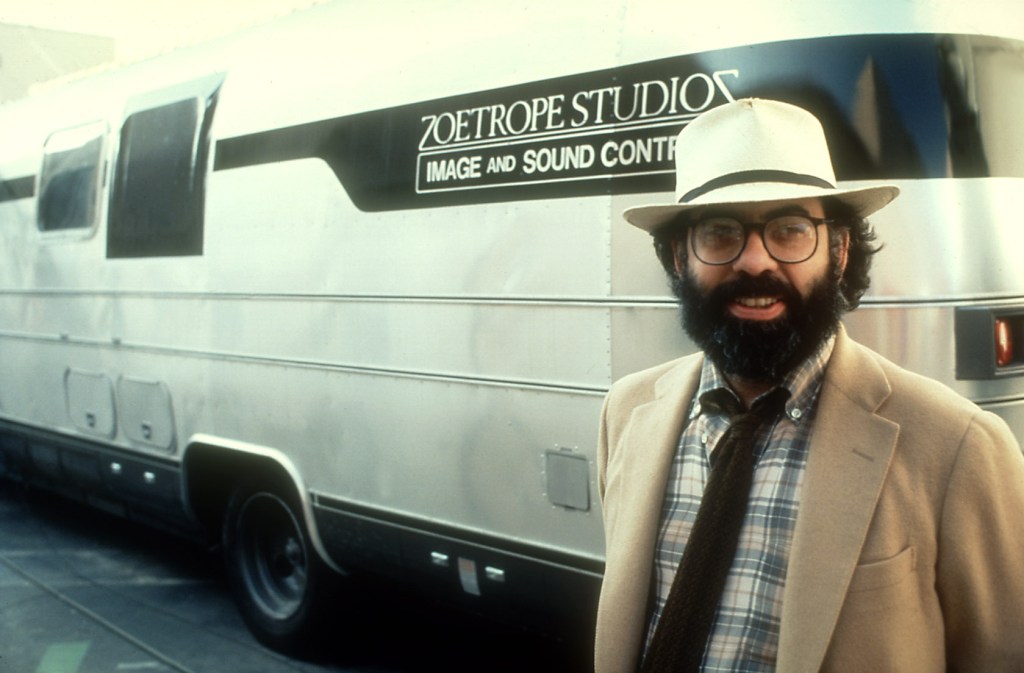
Will the Hollywood studio become extinct?
One hundred years ago, Louis B. Mayer unfurled his grand idea to mobilize “all the stars in heaven” for his filmmaking adventure. His dream factory, once prolific, now seems adrift amid the economic debris of streamerville and linear TV.
The studio system still has its advocates, one of whom, Francis Coppola, attempted to re-invent the studio on three occasions. He’s still trying.
His intriguing, if bizarre adventure, is told in a gripping new book by Sam Wasson titled Path to Paradise, vividly chronicling how the director leveraged his two great movies into an assembly line of cinema.
Well, almost. Coppola’s effort to orchestrate the genius of The Godfather and Apocalypse Now into an enduring filmmaking enterprise was defeated by two realities: The eccentricity of his management style and the frailty of his infrastructure.
Zoetrope was to be owned and run by creatives who were dedicated to the art of cinema. Though defeated three times, Coppola was back in Venice last week with cuts from his latest film, Megalopolis, and with a re-edited print of his 1982 romantic musical One From the Heart – the show that bombed.
The completed $140 million Megalopolis (Coppola’s own money) will shortly be offered to worldwide distributors, hopefully pumping new energy into the Zoetrope brand.
Will he succeed? Says a cautiously optimistic Wasson: “It’s time for Hollywood to embrace a new kind of studio system and Francis has the right idea: With the proper infrastructure, talent and new technologies, his concept ensures a balance of risk and security for filmmakers plus quality product for audiences.”
Skeptics might argue that the timing of a new studio would confront a traumatic moment in the movie market, if not the entire range of platforms.
As a hungry young filmmaker in the early 1960s, Coppola churned out a succession of ambitious low-budget films like You’re a Big Boy Now and Rain People. Linking with his friend George Lucas, Zoetrope secured the backing of Warner Bros to develop further indie films like American Graffiti.
When Warners read the scripts and viewed the cuts, however, Coppola was told his green light had blinked to red and he had to repay the development costs ($300,000). “We don’t want to make hippie pictures, we want to make ‘audience movies’ like Love Story,” said John Calley, the studio production chief.
Twenty years later, the determined Coppola decided to channel the mythic success of The Godfather into a re-energized Zoetrope dream. But the plan quickly capsized amid the anarchy of Apocalypse Now – the 1979 classic whose production calamities are vividly recounted in Wasson’s book. The movie reflected the emotional unraveling of its director as well as its central character, Col. Kurtz, played by Marlon Brando.

Marlon Brando in 1979’s ‘Apocalypse Now’
Given his paychecks of $1 million a week, Brando showed up on location almost 100 pounds overweight. He’d also disdained reading the script and spent most of his three-week gig closeted with Coppola, struggling to invent his lines.
Apocalypse received rave reviews, giving Coppola the impetus for yet another Zoetrope revival, this one entailing acquisition of an aging studio facility in Hollywood to be run principally by friends and fans. They knew little about studio management.
Coppola’s movie obsession at the time was a Las Vegas musical titled One from the Heart based on an original screenplay by Armyan Bernstein. Conceived initially on a modest budget, Coppola decided to design an expansive $23 million musical requiring construction of ambitious Vegas sets – the actual Vegas was only a short flight away.
But his vision was to create an innovative experiment in “live cinema” – a sort of electronic filmmaking that enabled him to shoot complex takes in one sweeping set-up, thus saving time and money without sacrificing quality.
After a disastrous first screening at the Radio City Musical Hall, Hollywood’s power players distanced themselves from Coppola and his $30 million debt, and declined even to distribute the film. “Coppola is a national resource without the resource,” said Barry Diller, then chief of Paramount.
“Hollywood seemed wiling to reject not just Coppola’s movie but the entire concept of his ‘studio of the future’ — they’d be in better shape today had they listened.” writes Wasson. “The studios wanted Coppola to go back to being a director-for-hire, and not mess around with their business plans.”
In keeping with this mandate, the innovative filmmaker turned out a succession of rather conventional films such as Gardens of Stone, Peggy Sue Got Married and Dracula (a box office success). Coppola also directed a series of small films (Tetro, Youth Without Youth) fostering his precept of electronic cinema.
They failed to find an audience. His other ambitious scheme to shoot a 16-hour experimental film titled Elective Affinities based on a novel by Johan von Goethe was never realized.
Before writing Path to Paradise, Wasson wrote several well received books including The Big Goodbye about the making of Chinatown and The Oral History of Hollywood, co written with Jeanine Basinger. He book drew on the American Film Institute’s vast library of tapes recorded by Hollywood’s most revered stars and filmmakers.
Does Coppola fit into that great galaxy? Wasson would file an enthusiastic “yes,” and Coppola himself shows signs of out-living his naysayers.














